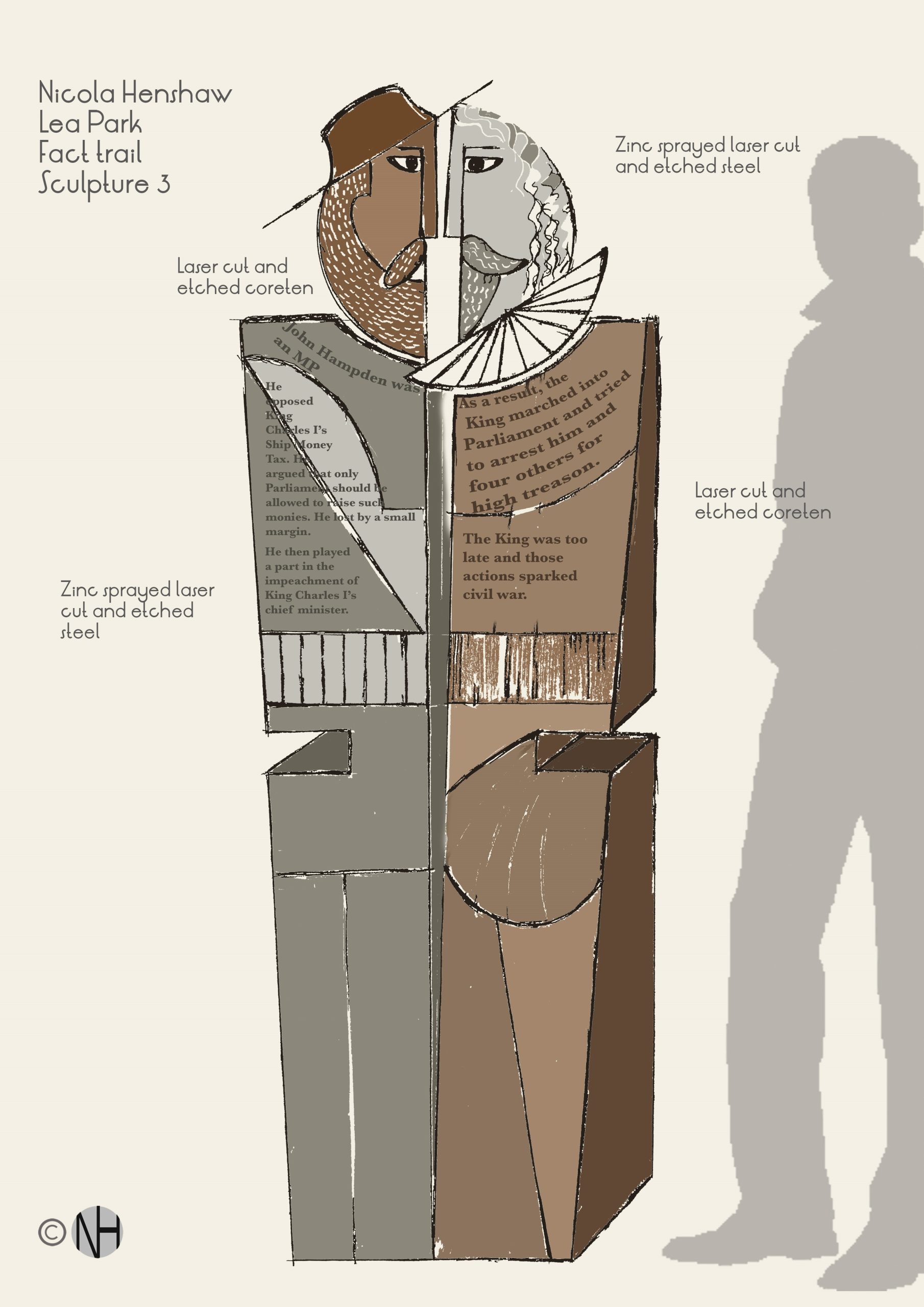John Hampden vs King Charles
Welcome to the sixth ‘stop’ on ‘The Cavalier & Roundhead Route’ – a sculpture trail in Lea Park.
This trail was funded through Public Art Funding, and installed in 2024. Find out more about the project through this link.
The part Thame played in the Civil War
This piece of public art depicts the two sides of the Civil War. You have John Hamden on the left – representing the Parliamentarians, and King Charles on the right – representing the Royalists. We know the roles that they played in the Civil war, but what was Thame’s role?
The text below contain snippets of information taken from ThameHistory.net, and you can read it in full here.

The land east of the Chiltern Hills, towards London, and to the north of the Vale of Aylesbury, was controlled by Parliament. The land to the west of Oxford, Oxford City itself and key towns in the Thames Valley, such as Wallingford, were controlled by the King. The King himself set up court at Oxford.
Manor houses and market towns along the Oxfordshire border, such as Thame, were called upon to feed, house and tend the wounds of soldiers from both sides as the conflict progressed. In 1643 Thame was not openly Royalist or Parliamentarian, although the sentiment within the town was said to be generally Puritan and pro Parliament. The Earl of Essex commanded the Parliamentary army locally, and the King’s local forces were commanded by his nephew Prince Rupert. The Earl of Essex made a push in early 1643 to close in on Oxford, and set up his headquarters in Thame.
Prince Rupert mounted raids out of Oxford against the Parliamentarian army’s positions. It was in returning to Oxford from one such raid that the Royalist party engaged at Chalgrove with a Parliamentarian contingent led by John Hampden. In the resulting battle John Hampden was mortally wounded. He managed to make his way to Thame, where six days later he died, on 24th June 1643.
The following month the Parliamentarian army retreated from Thame and the Earl of Essex moved his headquarters to Aylesbury.
ThameHistory.net details further wartime activity – a Royalist party fleeing back to Wallingford from Long Crendon, through the west end of Thame, in January 1644; a Royalist force from Oxford riding into Thame market in September 1645 to attack a substantial Parliamentarian force again garrisoned at Thame; and two regiments of horse being moved to Thame in December 1645 bringing an end to Royalist attacks.
The end of Thame’s role in The Civil war came in June 1646 (after King Charles had left Oxford and surrendered to Parliament in April 1646), when Sir Thomas Glemham (the governor of Thame) was allowed to march out of Oxford on 23rd June 1646 with his Regiment of Foot of some 3000 men, fully armed and with their colours flying. King Charles had ordered them to disband and when they reached Thame they did – and act that marked the end of what is known as the first English Civil War.
Challenge Questions:
Look at the Way marker
- Questions to follow
CONTINUE THE TRAIL:
- To find the final stop on this Public Art Trail, continue along the central pathway through Lenthall Green, ignoring turns to the right and left, until the pathway passes between two houses to connect with Langdale Road.
- Walk straight along Langdale Road and turn right onto Onslow Drive.
- Walk past the entrance to Naseby Close and turn left onto a road that will bring you into Churchill Crescent Play Area. The final piece of art is located on the left of the park when approaching from this direction.
